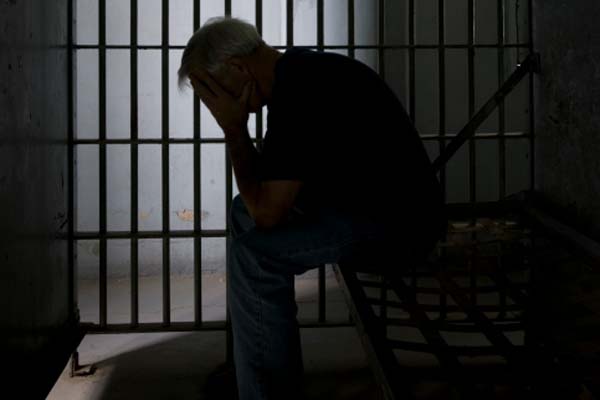I have just returned from three days in British Columbia (Victoria and Vancouver) spent talking about the SRL Phenomenon – the numbers, its impact, and what kinds of change are needed to even begin to address the crisis in justice services.
I spoke with government officers and staff, lawyers, law students, judges and mediators. I was ably assisted in communicating the urgency of the problem by three local SRLs from the NSRLP Speakers Bank (thank you to Jennifer Muller, Liz Dohan and Helen Smythe).
With its history of innovation, it is difficult not to imagine that British Columbia might in fact be able to take some national leadership on the A2J Crisis and the SRL Phenomenon.
For the last decade, most of the truly radical thinking and innovation in justice services has come out of BC – for example, significant reforms in the BC Family Law Reform Act, the development of the Justice Access Centres and Family Justice Centres, and the nascent Civil Resolutions Tribunal, the only on-line and self-representation tribunal model in Canada.
But it is a sign of the enormous challenge of change that in BC, just as in other parts of Canada where I have been having this conversation over the last 9 months, there is a pervasive sense of fatigue, impatience and exasperation among those doing the heavy lifting in pressing for change.
There is a memory of the bloody battles that surrounded the last efforts to reform the rules of Civil Procedure in BC (when the Trial Lawyers Association launched a ludicrous web campaign telling BC residents that their civil liberties would be infringed by any rule simplifications.).
There is diminishing patience with an apparently endless series of conferences on some version of “The Future of the Justice System” (“Let’s Get it Together”, “Let’s Get it Together (2)”, “Let’s Really Get it Together” etc), which leave some participants feeling that they have “done” something – whereas in fact they have just talked about doing something.
So as I flew out of Vancouver on Friday, I asked four trusted BC colleagues – all foot soldiers in this battle, and comprising one mediator, one lawyer, one A2J professor and one SRL, several with experience in government – to tell me what they saw as their biggest achievements so far in making the BC justice system responsive to the A2J Crisis – and their biggest challenges. The four focused their comments on family justice services, because that has been the focus of their own work.
Things to Feel Optimistic About
The four foot soldiers struggled a bit with this one, but came up with a couple of consistent reflections.
There is some evidence of a growing awareness of the urgency and extent of the SRL Phenomenon. Government has taken some important steps towards including SRL representatives in new policy initiatives and think-tanks.
There are some unique initiatives making a difference – such as the development of the BC Justice Access Centres to assist SRLs, and the utilization of paralegals in an assisting/ advising role (more advanced in BC than anywhere else in Canada).
And there are signs of a growing acknowledgement – in some important quarters – that the only long-term fix is finding ways to keep families out of court altogether as much as possible.
Challenges
1. Ignorance
There continues to be a lack of general knowledge about the SRL Phenomenon (as one put it, “Do people really know the numbers?”). This is frustrating because it means that the extent and urgency of the problem is still unacknowledged in many quarters.
How could policymakers and leaders in the profession and judiciary not be spurred into action if they really ingested the fact that more than half the people in most family courts are now there without a lawyer? And that this is for most people not a choice but all they can do?
2. Institutional Inertia
“Legal system folks can talk the talk about access, but they get their backs up really quickly when they are personally asked to change – to change who they serve, how they bill for services, who else can “compete” for work etc.”
There is still a belief that drives resistance to change that the legal system “belongs” to system insiders such as lawyers and judges, and they “know best” what the public needs and wants.
3. Misplaced Beliefs that Government/ Legal Aid can “Fix” it
This is related to Challenge (1) above. Knowledge of the numbers of people seeking to access the justice system without a lawyer makes the idea that this can be remedied by increasing legal aid funding a no-brainer. It could not come close to addressing the scale of unmet needs that exist (see legal economist Gillian Hadfield at http://works.bepress.com/cgi/viewcontent.cgi?article=1057&context=ghadfield)
(As Hadfield recognizes, the belief that Legal Aid can save us is another version of the equally misplaced assumption that pro bono services will fix the A2J crisis: see https://representingyourselfcanada.com/2014/02/20/lawyers-do-more-pro-bono-work-than-any-other-profession-why-pro-bono-will-not-and-can-not-save-us-from-the-a2j-crisis/)
4. When Change is not in our Self-Interest
Overcoming the resistance to change that sees us clinging to business as usual (BAU) in the justice system is the most frequently mentioned and biggest challenge of all. People prefer to do things the way they have always done them – and especially when it pays them well / reinforces their power and status. What is more, they prefer to tolerate the intolerable rather than speak out publicly about the unfairness of the system.
A chilling example of this came from the presentation made by Jennifer Muller – who was a SRL in the BC Supreme Court – to a group of lawyers, mediators and collaborative practitioners in Vancouver last week. Jennifer described how her lawyer responded when, having spent more than $30,000 in a few months, she told her that she could no longer afford to continue with counsel and instead would have to represent herself. The lawyer’s reaction: “You cannot do this. The system will chew you up and spit you out.”
One of my foot soldiers reflected later: “I have thought a lot (about this comment). My heart has been full of sorrow because this is where we are….(Y)our lawyer’s comment screams out about the deep, systemic injustices built into our system, and the fact that this is something that everyone who works in this system knows about, but prefer not to talk about as blatantly as she did. And although she said this to you, I wonder if she would be as honest standing in front of a group of her colleagues.”
Raising the Political Profile of the Family Justice Crisis
A lasting impression from my week out West is that the A2J crisis requires intentional, strategic and courageous advocacy by leaders both inside and outside the legal system if we are to really challenge BAU.
Inside the system this means that judges, lawyers, academics and policymakers need to stop tolerating inertia and self-interest, step up and speak out. Outside the system this means public advocacy not only by SRLs and social justice advocates – but also getting the attention of those running for public office.
We need to elevate public awareness of the A2J crisis – especially as it impacts families – so that public officers (in office, running for office) are pressed to say what they will do to address the A2J crisis, and what they propose to enable the families whom they represent to resolve their legal problems with as much dignity and with as little social cost as possible. If they are presently ignorant of the scale and the impact of the problem, then they must be persuaded that they need to educate themselves.
In case you think that this is pie in the sky and that family policy will never be this important to politicians – the UK Relationships Foundation (http://www.relationshipsfoundation.org) calculates the cost of family breakdown in the UK last year at $85 billion. The costs of courts and legal services for family matters alone (excluding Legal Aid expenditures) amount to over $1 billion. Subsequent physical and mental health services costs another $14 billion, repercussions that we know to be greatly exacerbated by the experience of self-representation. And then there is the cost of the impact on children (protective services, school services, youth criminal justice services – the list goes on).
Marital breakdown and family transitions will always mean social and financial costs, both individually and to society at large. But our present model of family justice is not just grossly inefficient and costly – it creates so much additional and unnecessary pain and distress. Many ordinary British Columbians who have been through this nightmare know this.
In BC, and everywhere else in Canada, we must be able to do better than this.












The urgent reality of this message is heartening. 2 comments: First as a SRL with disabilities trying my own Medical Malpractice case, having been discriminated against by the lawyer and abused by the case management judge, I am concerned about the myopic focus on family issues.
Personal and medical injury are serious issues that profoundly affect people’s lives. Our cases are just as important as those faced with family issues. Many of our cases were born out of family issues.
Thanks to Ms. Macfarlane’s research and ongoing dialogue with system users, the truth of what is really happening to the public encountering our abusive adversarial justice system is being revealed. We are in a lot of trouble, life is short and help is NOT just around the corner. In fact most of us currently being eaten as dinner will not find any measure of justice here; only more pain, costs and loses. We have to prepare ourselves for that reality. Those of us who survive it will have to be the ones to create a new system.
We must help ourselves because justice does not exist in the justice system.